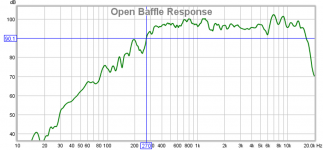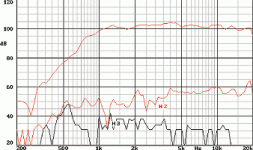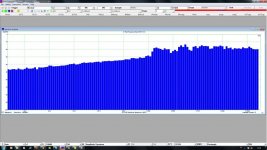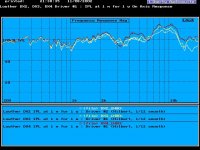The FR plot on that Seas looks terribly ragged at the top-end.
I wonder if that's because Seas have used less smoothing and better scale (5dB between grid lines) in their graph than most people. It seems to me that the only wide band speakers with very smooth response also have lower than average efficiency.
Looking at a few user measurements:
Lowther Dx series:
-Legendary 'full range' drivers
-$1,000-2000 USD a pair
--> measured (Martin King's site) to have a 20dB variance between the 3kHz dip and 8-11kHz hump
The PRV 5MR450-NDY:
-an efficient wideband mid
-$200 USD a pair
-xrk971 described it glowingly, and was "shocked by how good this measurement looks"
--> he measured a 10dB variance between 6 and 7kHz. It looks much better on the factory graph because of smoothing and confusingly marked grid lines.
The Beyma TPL-150:
-an efficient mid/tweeter
-$900 USD a pair
-highly regarded, eg "sweet liquidy music, fast and very detailed with that cd room filling 3d sound. .. what more could anyone want."
-The official FR plot looks great with a bit of smoothing and if you don't notice the 20dB division between the major grid lines.
...but this user's plot shows a roughly 10dB variance between 2 and 3kHz
The moral being (IMO) that a few peaks or dips probably don't matter too much, unless they are part of a grosser issue, like an up-tilted response. Once the Seas overall response is flattened down to ~89dB (see the Madisound site) it looks about as flat as any similarly efficient speaker with that bandwidth.
Attachments
You're welcome!
Not sure I know; I mean the pioneers concluded that the optimum box compliance before venting was whatever net Vb raised the driver's Fs 1.56x in a sealed alignment or ~74.3 L based on published specs, so maybe this is a driver's 'sweet spot' for sealed as opposed to what T/S calculates?
That said, drivers had very little power handling, so were never subjected to any real box loading pressure. Even the PA/cinema compression loaded FLHs were either actually BLHs large enough to acoustically control them with any compression chamber to balance them out or only semi-aperiodic [slots plus damping] at most: http://www.audioheritage.org/images/lmco/photos/products/shearer/shearer3.jpg
In short, my SWAG is that for your 'vintage' design drivers it's probably fine and you may want to compare it to the smaller box if you believe the specs are accurate enough.
GM
Not sure I know; I mean the pioneers concluded that the optimum box compliance before venting was whatever net Vb raised the driver's Fs 1.56x in a sealed alignment or ~74.3 L based on published specs, so maybe this is a driver's 'sweet spot' for sealed as opposed to what T/S calculates?
That said, drivers had very little power handling, so were never subjected to any real box loading pressure. Even the PA/cinema compression loaded FLHs were either actually BLHs large enough to acoustically control them with any compression chamber to balance them out or only semi-aperiodic [slots plus damping] at most: http://www.audioheritage.org/images/lmco/photos/products/shearer/shearer3.jpg
In short, my SWAG is that for your 'vintage' design drivers it's probably fine and you may want to compare it to the smaller box if you believe the specs are accurate enough.
GM

They have arrived and I have knocked up a stunning box for one of them. ��
They haven't had much break in and the box is a bit leaky and not stuffed or lined, so I am expecting a bit more from them when I build some proper boxes but so far all is good.
With eq bass is plentiful in a small room. I guess that a lot of 8 inch drivers put into large boxes would out perform these in the bass department but in my room they will be fine.
In terms of overall sound quality they are great I have applied a mild 3db dip across the presence region and will need to measure them to narrow this down to the cone breakup but they are fast and detailed and don't have the dramatic rising response that is said to be typical of whizzer cones.
- Status
- This old topic is closed. If you want to reopen this topic, contact a moderator using the "Report Post" button.
- Home
- Loudspeakers
- Full Range
- do these Chinese 8"full range look familiar?



